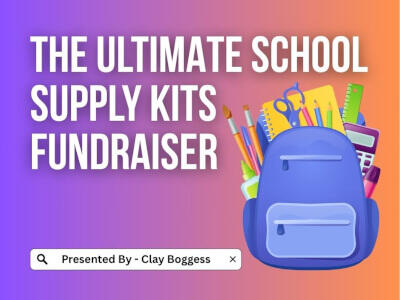
Fast and easy ways to boost your group's sales.
You plan to have a kickoff meeting to discuss your goals and expectations with your group. You'll introduce your brochure and why potential customers will love it. Your students should be motivated to sell because you feel you've selected a good prize program. More importantly, you feel they should feel obligated to sell because of the cause.
What else is there to do? You seem prepared, but how can you ensure your group has a successful high school fundraiser? Are there other things that you can do to help your students succeed? If you want your students to be successful at making sales, it will be vital for them to be interested and prepared. Here are three ways to help them maximize their efforts from day one.
1. Prepare a Customer Prospect List
Set aside some time during your kickoff to have your students prepare their prospect list. This is a list of names of people who they plan to talk to about making a purchase. They can be family, neighbors, friends, and people they see periodically, like a coach or fellow churchgoers. They should also have a way to track when they've approached a particular person and what the results are. Make sure everyone's list has at least 10 to 15 names on it. The more names your students can add to their list, the better.
2. Incorporate a Sales Pitch
Don't send your students out selling without first reviewing how to approach potential customers. Most high school students will want to take the path of least resistance and say something like, "Want to buy something?" While this is easy and simple for them, it is ineffective. Most prospective buyers want to know two things:
- Who are you?
- Why are you selling?
Therefore, make sure your students introduce themselves and tell the potential customer why they are selling. For example, "My name is John Doe with Carver Band, and we are raising money for our spring trip." Once these two questions are answered, hand over the brochure, step back, and smile. The less said at this point, the better. The brochure should sell itself if you're selling good products at a fair price. Regardless of the outcome, don't leave without saying thank you. We recommend using our NOW Selling Method. Students should partner up and practice their sales pitch during the kickoff. You can even provide an incentive to a couple of students who are willing to roll play in front of the group. This strategy is simple, and it works.
3. Set Smaller Periodic Fundraiser Goals
Create a sense of selling urgency. Nothing generates accountability more effectively than meeting again after the first selling day. You'll want to check in with your students on their early progress. For example, if you've determined each seller's end goal is ten items, you might want to set a first-day goal of 2 or 3 items. It's also a good idea to also meet with your group again at the midway point. You can set that item goal at around 6 or 7 items. By breaking your sale down into smaller sales goals, you are:
- Teaching your students to see the selling process in smaller, more obtainable steps.
- Holding your students accountable to staying on track towards the end goal.
- Gathering information on how your sale is progressing.
If your students know you're checking on them, they will be more apt to keep up with their selling. Your extra effort may result in a great high school fundraiser.
Author Bio
Clay Boggess has been designing fundraising programs for schools and various nonprofit organizations throughout the US since 1999. He’s helped administrators, teachers, and outside support entities such as PTAs and PTOs raise millions of dollars. Clay is an owner and partner at Big Fundraising Ideas.



